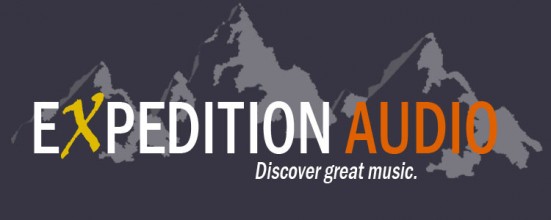Share This
Album at a Glance
Tags
Related Posts
- Alfred Bruneau: Requiem; Claude Debussy: Pelléas et Mélisande, Symphony / Ludovic Morlot
- Kuhlau (1786-1832): Flute Quintets / Ginevra Petrucci, flute; Kodaly Quartet
- Poul Rovsing Olsen: Piano Concerto; Symphonic Variations; Au Fond de la Nuit / Christina Bjørkøe, piano
- Ferdinand Ries: Der Sieg des Glaubens, oratorio
The Golden Age of Danish Partsongs / Ars Nova Copenhagen; Paul Hillier
Posted by Paul Ballyk on Sep 6, 2014 in Romantic | 0 comments
This splendid album, The Golden Age of Danish Partsongs, should be an obvious acquisition for any listener who enjoys Romantic choral music. It's been released by the Danish Dacapo label and is performed by Ars Nova Copenhagen under the direction of eminent choral conductor, Paul Hillier. Made up of folksongs for a cappella mixed chorus, these beautiful settings come from nine composers, and span a period from the early 19th-century through the late 20th-century. The music is most enjoyable, and the choir sounds wonderful.
The earliest setting, by Friedrich Kuhlau (1786-1832), dates from 1825 and the latest, written in 1994, is by Ib Nørholm (b.1931). Most of the twenty-three selections were written during the Romantic and Post-Romantic eras, with texts based largely on matters of love, nature and God - typical fare for folksongs from most any region of the world. Uncomplicated settings of simple beauty are heard alongside others with marvelously intricate harmonies and delicately feathered counterpoint ; all of it is sung with astonishing precision and musicality by Ars Nova Copenhagen.
The program opens with a generous seven minutes of music by Carl Nielsen (1865-1931). All simplicity and grace, sublimely sung, you can hear the opening song, Oh Jesu mine, may my heart learn as one of the two album samples available in the right sidebar. The second sample, In autumn, is an absolute charmer by Niels W. Gade (1817-1890). Other settings are by J.P.E. Hartmann (1805-1900), Thomas Laub (1852-1927), Peter Heise (1830-1879) and Svend S. Schultz (1913-1998). Not all of the music is by Danish composers; there are settings by Friedrich Kuhlau and C.E.F. Weyse, both Germans who worked extensively in Denmark.
Dacapo provides superb sonics for this 32-bit Super Audio CD, recorded in 2012. In the album notes, Paul Hillier asserts, this 'Golden Age' is still upon us and that there is plenty more Danish Choral music to be heard. Hopefully, this will turn out to be the first of several volumes Mr. Hillier and Ars Nova Copenhagen records. Don't pass this one up!
The Danish Golden Age in the first half of the 19th century is known as a period with an abundance of artistic expression, famous talents such as Hans Christian Andersen, Søren Kierkegaard and early Romantic composers like C.E.F. Weyse and Niels W. Gade. But according to the British choral director Paul Hillier, we can in fact speak of a continued ‘ Golden Age’ for Danish choral music today – which is why this collection of Hillier’s Danish Golden Age jewels with Ars Nova Copenhagen includes Classical and Romantic works as well as music from the subsequent generations right up until our own time. :
Source: Dacapo Records
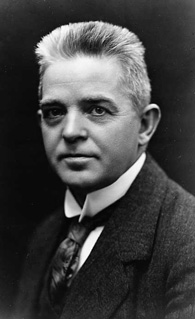 Carl Nielsen |
Carl Nielsen, composer Carl August Nielsen (1865 – 1931) is widely recognized as Denmark’s greatest composer, and is also remembered as a skilled conductor and a violinist. Brought up by poor but musically talented parents, he demonstrated his musical abilities at an early age. While it was some time before his works were fully appreciated, even in his home country, Nielsen has now firmly entered the international repertoire. Carl Nielsen is especially admired for his six symphonies, his Wind Quintet and his concertos for violin, flute and clarinet. In Denmark, his opera Maskarade and a considerable number of his songs have become an integral part of the national heritage. While his early music was inspired by composers such as Brahms and Grieg, he soon started to develop his own style, first experimenting with progressive tonality and later diverging even more radically from the standards of composition still common at the time.
http://en.wikipedia.org/wiki/Carl_Nielsen
|
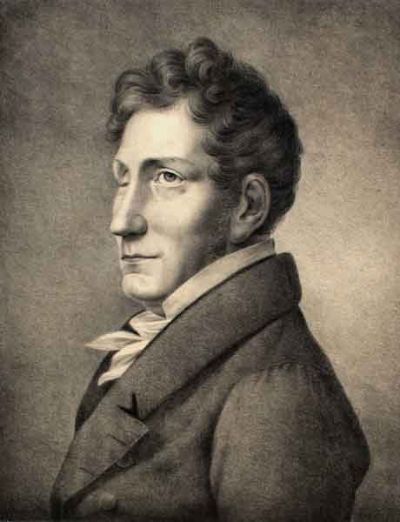 Friedrich Kuhlau |
Friedrich Kuhlau, composer Friedrich Daniel Rudolf Kuhlau (1786 – 1832) was a German-born Danish composer during the Classical and Romantic periods. He was a central figure of the Danish Golden Age and is immortalized in Danish cultural history through his music for Elves’ Hill, the first true work of Danish National Romanticism and a concealed tribute to the absolute monarchy. To this day it is his version of this melody which is the definitive arrangement. During his lifetime, Kuhlau was known primarily as a concert pianist and composer of Danish opera, but was responsible for introducing many of Beethoven’s works, which he greatly admired, to Copenhagen audiences. Considering that his house burned down destroying all of his unpublished manuscripts, he was a prolific composer leaving more than 200 published works in most genres.
http://en.wikipedia.org/wiki/Friedrich_Kuhlau
|
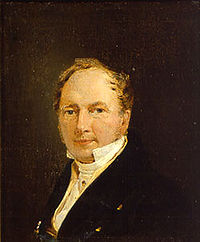 C.E.F. Weyse |
C.E.F. Weyse, composer Christoph Ernst Friedrich Weyse (1774 – 1842) was a Danish composer during the Danish Golden Age. Weyse was born at Altona, Holstein, (now in Germany, then part of Denmark). He gained much interest in music in his hometown and in Hamburg, where C.P.E. Bach was the municipal director of music. At age fifteen (1789), Weyse was sent to live with his uncle in Copenhagen to be educated, and lived there for the rest of his life. While in Copenhagen he studied music with Johann Schulz. He was best known for his vocal works, which included numerous singspielen, Christmas carols, a setting of the Te Deum and of the Miserere, over 30 cantatas, and above all, lieder after poems by Claudius, Voss and Hölty. He also composed seven symphonies and numerous pieces for solo piano. A part of one of his works opens the “Cat’s Duet,” or Duetto buffo di due gatti, usually attributed to Rossini.
http://en.wikipedia.org/wiki/Christoph_Ernst_Friedrich_Weyse
|
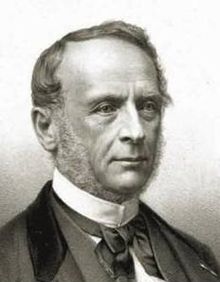 J.P.E. Hartmann |
J.P.E. Hartmann, composer Johan Peter Emilius Hartmann (1805 – 1900) was a Danish composer. Hartmann was born and died in Copenhagen and came from a musical family of German descent. Although he received his music lessons initially from his father, he taught himself as much as possible. By 1824, he was already the organist at the Garnisons Kirke in Copenhagen, and in 1832, he made his debut as a composer with the opera Ravnen (The Raven). Hartmann’s works were characterized by artistic seriousness, dramatic vitality, and in particular, by national coloring which appealed deeply to Danish audiences. The Nordic elements, which could be discerned in the themes based on folksongs, modulations, and the tendency towards rather dark sounds, emerged strongly after the 1830s. Hartmann united these Romantic influences with a strong control over both form and theme, acquired through his Classical training and often reminiscent of Felix Mendelssohn.
http://en.wikipedia.org/wiki/Johan_Peter_Emilius_Hartmann
|
 Niels Gade |
Niels W. Gade, composer Niels Wilhelm Gade (1817 – 1890) was a Danish composer, conductor, violinist, organist and teacher. He is considered among the most important Danish musicians of his day. Gade was born in Copenhagen, the son of an instrument maker. He began his career as a violinist with the Royal Danish Orchestra, and saw his concert overture “Echoes of Ossian” premiered with them in 1841. Among Gade’s works are eight symphonies, a violin concerto, chamber music, organ and piano pieces and a number of large-scale cantatas. His “Brudevalsen” (The Bridal Waltz), which he rejected and threw away, was rescued by August Bournonville, and went on to become an essential part of the typical Danish wedding.
http://en.wikipedia.org/wiki/Niels_Gade
|
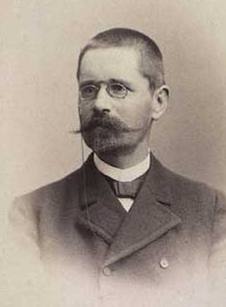 Thomas Laub |
Thomas Laub, composer Thomas Linnemann Laub (1852 - 1927) was a Danish organist and composer who had a particularly significant influence on Danish church music. His output includes organ music for use in church, liturgical music and songs to hymns, folksongs, Danish songs and shows.
http://da.wikipedia.org/wiki/Thomas_Laub
|
|
Peter Heise, composer Peter Heise (11 February 1830 - 12 September 1879) was a Danish composer, best known for the opera Drot og Marsk (King and Marshal), which tells the story of the murder of a medieval king, and shows a marked Wagnerian influence. Many of his songs, usually for soprano and piano, concern dreams, folk-tales and the Middle Ages. Although his instrumental works are almost uniformly excellent, they were long overshadowed by the tremendous popularity of his songs. Among his chamber works are 6 string quartets, a piano trio, a piano quintet, and a number of instrumental sonatas. His Piano Quintet in F Major (1869), was widely regarded as the best Danish piano quintet. The work remained in manuscript for 140 years, but a new edition was published in 2009 by Edition Silvertrust.
http://en.wikipedia.org/wiki/Peter_Arnold_Heise
|
|
|
Svend Schultz |
Svend S. Schultz, composer Svend Simon Schultz (1913 - 1998) was a Danish composer and conductor, and a pupil of Poul Schierbeck. As a young composer Schultz was decisively influenced by contemporary neoclassicism, and he remained true to this ideal all his life. His tonally based music gives expression to a free musical imagination paired with an attractive and easily comprehensible idiom.
http://www.naxos.com/person/Svend_S._Schultz/21174.htm http://en.wikipedia.org/wiki/Svend_S._Schultz
|
|
Ib Nørholm |
Ib Nørholm, composer Ib Nørholm (b. 1931) is a Danish composer and organist. Nørholm studied with Vagn Holmboe at the Royal Danish Academy of Music, where he later taught, becoming a professor in 1981. Among the honours Nørholm has received are the Gaudeamus International Composers Award in 1964, the Carl Nielsen Prize in 1971 and a knighthood in 1981. Initially, Nørholm’s music was very much in the tradition of Carl Nielsen, as exemplified by his first symphony (1956-8). In the 1960s, however, Nørholm began to explore the possibilities of serialism and graphic scores, having been deeply impressed by his experiences of the music of Stockhausen, Boulez, and others at the ISCM in Cologne. Later still his music took on a more economical approach, often characterised by the term ‘new simplicity’. Compositions by Nørholm include the opera The Young Park (1969–70), Symphony No. 3 (1973), sonatas for accordion (1967) and guitar (1976), Idylles d’Apocalypse for organ and orchestra (1980), Symphony No. 5 ‘The Elements’ (1980), Immanence for solo flute (1983), and the choral work Sjaelfuld Sommer (1997).
http://www.last.fm/music/Ib+N%C3%B8rholm
|
 Paul Hillier |
Paul Hillier, conductor Paul Douglas Hillier (b.1949) is an English conductor, music director and baritone. He specializes in early music and contemporary art music, especially that by composers Steve Reich and Arvo Pärt. He studied at the Guildhall School of Music, beginning his professional career while a vicar-scholar at St Paul’s Cathedral, London. His concert début was in 1974 in London’s Purcell Room. In 1974, Hillier co-founded The Hilliard Ensemble along with fellow vicar-scholar Paul Elliott and counter-tenor David James. Hillier remained the director of the ensemble until 1990, when he founded Theatre of Voices. In addition to early music, this group explores more contemporary repertoire. Since 2003, Hillier has been Chief Conductor of Ars Nova (Copenhagen). In 2008, was appointed Artistic Director and Chief Conductor of the National Chamber Choir of Ireland. Hillier has recorded a number of solo albums, some with harpist Andrew Lawrence-King, on the Harmonia Mundi, ECM, EMI, Finlandia and Hyperion labels.
http://en.wikipedia.org/wiki/Paul_Hillier
|
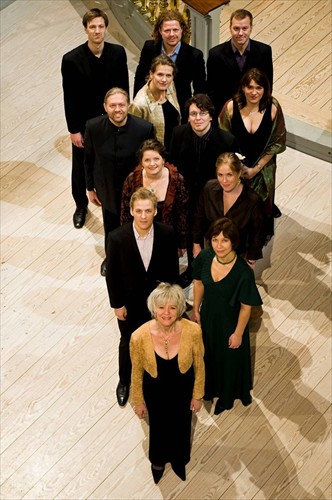 Ars Nova Copenhagen |
Ars Nova Copenhagen, ensemble Ars Nova of Copenhagen, is a Danish vocal ensemble focused on Renaissance and contemporary music, founded in 1979 by composer Bo Holten. In 1996 leadership passed to Hungarian conductor Tamás Vetö, and Holten founded a new ensemble, Musica Ficta (Denmark). The Ars Nova ensemble is now led by Paul Hillier, and collaborates with his ensemble Theatre of Voices.
http://en.wikipedia.org/wiki/Ars_Nova_Copenhagen
|
![]() About Paul Ballyk
About Paul Ballyk
all about Paul
Twitter •
| Thinking about purchasing this album?
Follow this link for more album details or to make the purchase. Buy it now |
“Not just recommended. Guaranteed.”
We stand behind every album featured on Expedition Audio. Our objective is to take the monetary risk out of music exploration. If you order this album from HBDirect.com and do not like it you can return it for a refund.
